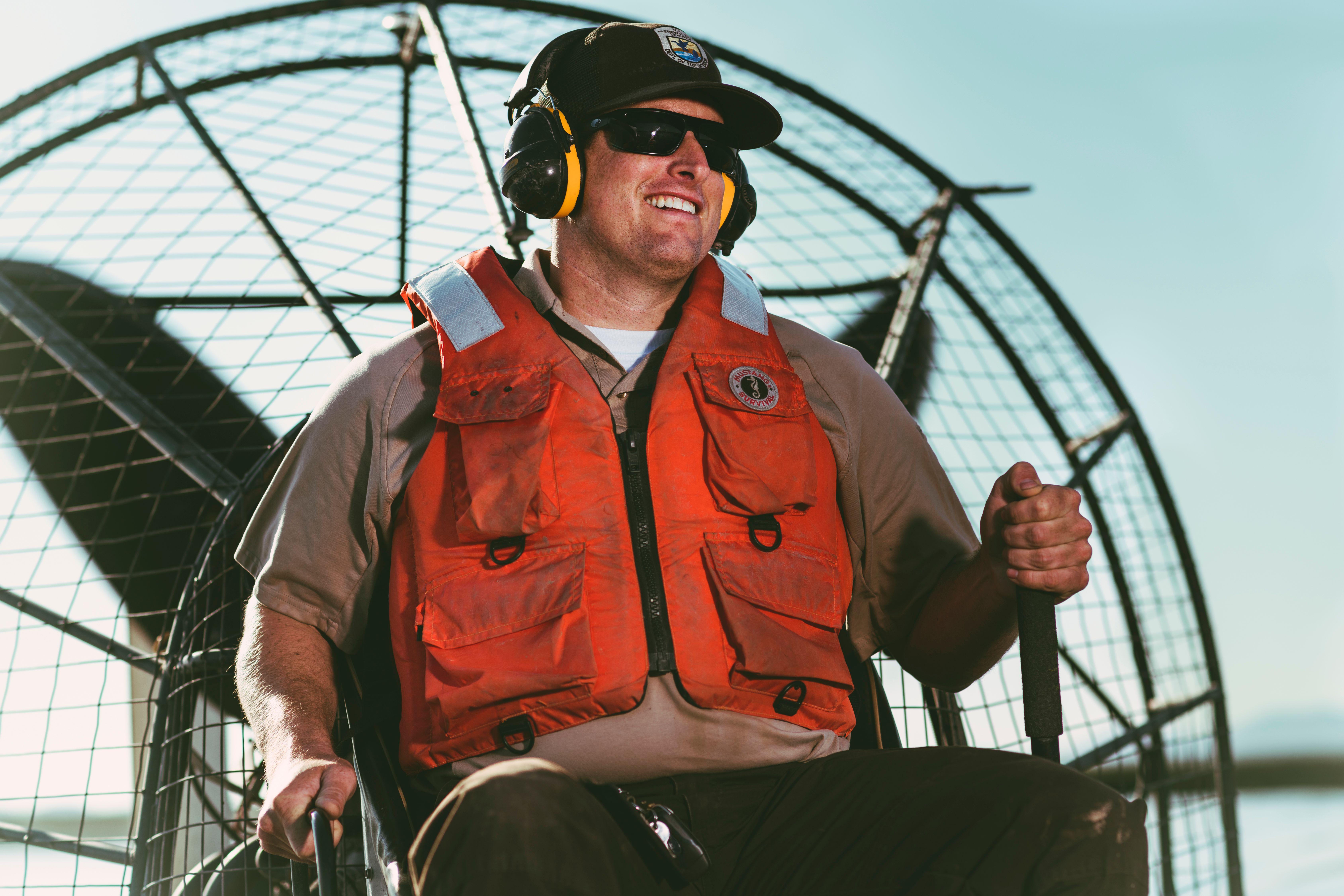James Pearson, Fish Biologist with the East Bay Municipal Utilities District

From the Marines to fish biology, that’s the unexpected journey James Pearson has traveled. James spent six years as a Fish Biologist for Malheur National Wildlife Refuge and is now a Fish Biologist with the East Bay Municipal Utilities District in Lodi, CA. While an Oregon State University doctoral student James helped develop a systems model for Malheur Lake that will help guide the Harney Basin Wetlands Collaborative with the choices they make for Malheur Lake’s revival.
Following four years of service in the Marines James enrolled in Cabrilla Community College in Santa Cruz, CA. While James was there, California was going through a major salmon collapse which was deeply concerning to him as an avid salmon angler. As he started looking into what was happening he learned about a scientist known as a fish biologist and the rest is history.
From Santa Cruz James shifted to Willamette University where he finished his undergraduate degree in biology while supplementing his education with summer work for the US Geological Survey (USGS) on projects focused around Coho salmon. Upon graduation he did seasonal work with Oregon Department of Fish & Wildlife, USGS and Oregon State University and then returned to school for his Masters degree with hopes of finding permanent work as a fish biologist.
During this time Jason Dunham (USGS Supervisory Research Ecologist and Oregon State University professor) was asked to conduct a research project at Malheur Lake and Jason, having worked with James, recommended him for the project. As James shared: “I am interested in all aquatic systems; however, I am especially fascinated by Malheur Lake because of the immense complexity of the system. Malheur Lake is a unique system in which its large size, shallow depths, and large lake fluctuations act more as a giant wetland than an actual lake. While the unique nature of Malheur Lake is interesting there are also a lot of difficult problems facing Malheur Lake that I am excited to try and solve (for example: Invasive Common carp, wind resuspension and nutrient dynamics). I am also interested in Malheur Lake because of the potential that the lake holds that I hope to maximize with our collaborators. For instance, while the United States and the World are continually losing wetland habitat we have the opportunity at Malheur Lake to restore critical wetland habitat and ensure its protection for migratory birds flying the Pacific Flyway.”
When James isn’t studying aquatic systems he’s relaxing at home with his wife Kelsey, their daughter and Bo Jackson the dog and likely reading a good crime novel. During the fall, you can find him hunting, fishing or crabbing on the Oregon Coast.

